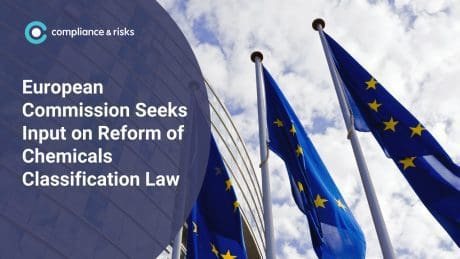
EU Conflict Minerals Regulation – Understanding the Geographic Scope

 Regulation (EU) 2017/821 requires that the European Commission issue non-legally binding guidelines to identify the “conflict-affected and high-risk areas” from which the minerals addressed by the regulation are sourced. Much anticipated, these guidelines have now been published.1 Earlier commentary by Jack Crowley of Compliance & Risks provided a helpful overview of the guidelines2; this article now reflects on how geographic scope is interpreted within the guidelines.
Regulation (EU) 2017/821 requires that the European Commission issue non-legally binding guidelines to identify the “conflict-affected and high-risk areas” from which the minerals addressed by the regulation are sourced. Much anticipated, these guidelines have now been published.1 Earlier commentary by Jack Crowley of Compliance & Risks provided a helpful overview of the guidelines2; this article now reflects on how geographic scope is interpreted within the guidelines.
The guidelines define conflict-affected and high-risk areas as covering three geographical contexts:
- Areas in a state of armed conflict – where there is the presence of armed conflict, widespread violence or other risks of harm to people. Reference is made to guidance provided in the Geneva Conventions of 1949.
- Fragile post-conflict areas – “Areas witnessing weak or non-existent governance and security, such as failed states, and widespread and systematic violations of international law, including human rights abuses.”
- Failed states – where there is “extreme institutional weakness”.
Thus, the scope of the regulation as interpreted in the guidelines is quite broad. These new guidelines are provided to enable companies to assess for themselves the geographic scope of their due diligence efforts and provide references to publicly accessible sources, such as the Global Peace Index, Worldwide Governance Indicators and Global Witness, which can be used to underpin such an assessment.
However, Article 14 of Regulation (EU) 2017/821 does state that the Commission will mandate work to provide “an indicative, non-exhaustive, regularly updated list” of areas in scope. This wording is important; this list should not be relied upon exclusively. It is still the responsibility an EU importer of minerals or metals containing tin, tantalum, tungsten and gold (the 3TGs) to ensure that when sourcing from areas not on the list that they still discharge their due diligence obligations. Examples of situations where this might arise could include where new conflict arises or where uncertainties over provenance in the supply chain are uncovered. This relates closely to the guidelines discussion of “red flags”, situations which “trigger the need for enhanced due diligence”.
The guidelines set out examples of such situations such as:
- Where minerals are claimed to originate from a country which exports more that it mines;
- Where minerals transit through a conflict-affected and high-risk area; or
- Where gold is claimed to be from scrap/recycling but has been refined in a conflict-affected and high-risk area (or has transited such an area).
What constitutes enhanced due diligence is only discussed briefly in the guidelines but would include the collection of additional information through a company’s management system in order to ascertain the circumstances prior to taking appropriate action. The OECD supplement to their due diligence guidance concerning gold, for example, provides more detail on the issues that arise in the supply chain and how to conduct due diligence3.
Finally, note that whilst the focus of the guidelines is on the 3TGs, it is clear that the approach set out in the guidelines could equally be applied to the sourcing of many other minerals (such as cobalt, lithium or copper).
1 Commission Recommendation (EU) 2018/1149 of 10 August 2018 on non-binding guidelines for the identification of conflict-affected and high-risk areas and other supply chain risks under Regulation (EU) 2017/821 of the European Parliament and of the Council. C/2018/5367 – read here
2 Read here
3 Gold Supplement to the OECD Due Diligence Guidance, read here








